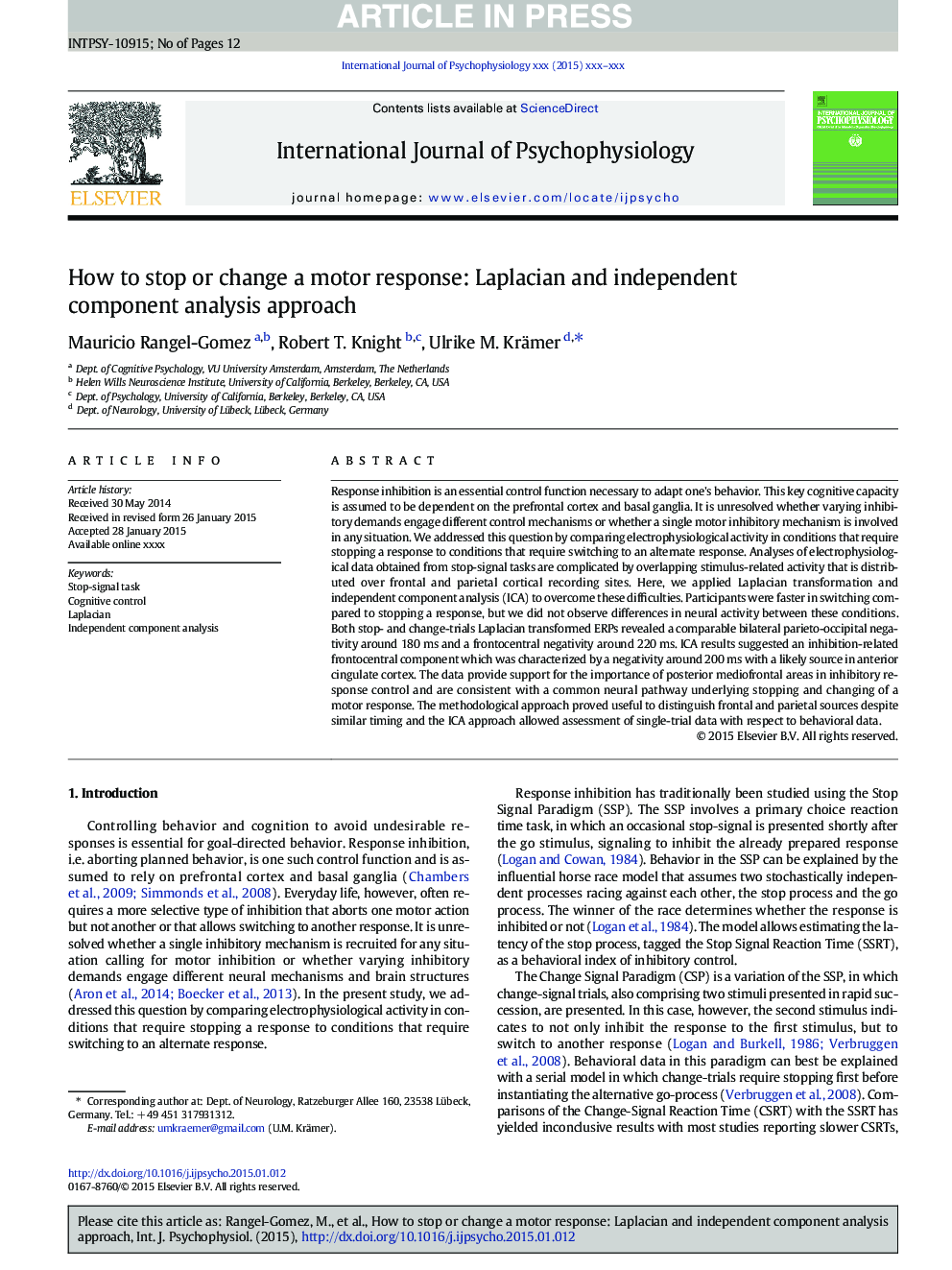| Article ID | Journal | Published Year | Pages | File Type |
|---|---|---|---|---|
| 7295323 | International Journal of Psychophysiology | 2015 | 12 Pages |
Abstract
Response inhibition is an essential control function necessary to adapt one's behavior. This key cognitive capacity is assumed to be dependent on the prefrontal cortex and basal ganglia. It is unresolved whether varying inhibitory demands engage different control mechanisms or whether a single motor inhibitory mechanism is involved in any situation. We addressed this question by comparing electrophysiological activity in conditions that require stopping a response to conditions that require switching to an alternate response. Analyses of electrophysiological data obtained from stop-signal tasks are complicated by overlapping stimulus-related activity that is distributed over frontal and parietal cortical recording sites. Here, we applied Laplacian transformation and independent component analysis (ICA) to overcome these difficulties. Participants were faster in switching compared to stopping a response, but we did not observe differences in neural activity between these conditions. Both stop- and change-trials Laplacian transformed ERPs revealed a comparable bilateral parieto-occipital negativity around 180Â ms and a frontocentral negativity around 220Â ms. ICA results suggested an inhibition-related frontocentral component which was characterized by a negativity around 200Â ms with a likely source in anterior cingulate cortex. The data provide support for the importance of posterior mediofrontal areas in inhibitory response control and are consistent with a common neural pathway underlying stopping and changing of a motor response. The methodological approach proved useful to distinguish frontal and parietal sources despite similar timing and the ICA approach allowed assessment of single-trial data with respect to behavioral data.
Related Topics
Life Sciences
Neuroscience
Behavioral Neuroscience
Authors
Mauricio Rangel-Gomez, Robert T. Knight, Ulrike M. Krämer,
